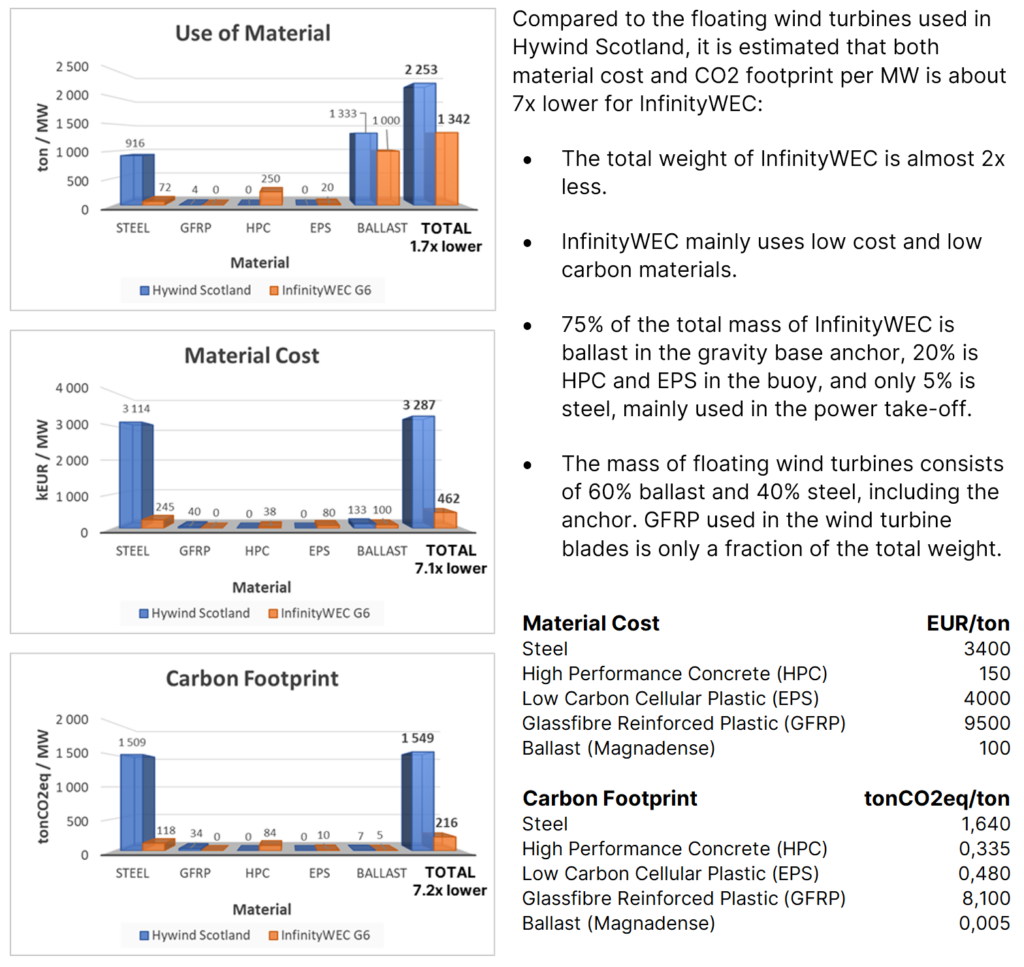2023.07.05
Cost of Material and CO2 Footprint 7x Lower per MW for Wave Power compared to Floating Wind Power
A comparison of the material efficiency between InfinityWEC Wave Power and offshore floating Wind Power.

InfinityWEC is a 500 kW wave energy converter with advanced control technology to maximize energy output from every wave, designed to use mainly low cost and low carbon materials. InfinityWEC is suitable for the same areas as floating wind power, in 80 – 200m water depth. A comparison of the material efficiency shows that InfinityWECs cost and CO2 footprint per MW installed capacity are 7x lower compared to floating wind power.
The Levelized Cost of Energy (LCOE) is the standard metric for renewable energy technologies. LCOE gives the complete picture for an installation and is derived from cost of equipment (CAPEX), operation & maintenance (OPEX) and annual energy production (AEP). Early-stage technologies must use assumptions and estimations of unknowns and learning curves, to compare LCOE with mature and established technologies such as offshore wind power, which already has several GW of power installed.
The material efficiency is an important complement to the LCOE to estimate the economic potential of renewable energy technologies. This is a straightforward metric to benchmark emerging technologies versus mature and established technologies. It assumes that cost per ton for each material is the same for all technologies, as well as the CO2 equivalent per ton. This makes it possible to calculate and compare the total cost and CO2 emissions of materials used per MW installed capacity.
Mikael Sidenmark, CEO, says: “The reason for the exceptional techno-economic potential of InfinityWEC is the combination of firstly using mainly low-cost materials such as concrete in the buoy and high-density ballast in the gravity base anchor, and secondly, the design of the power take-off with very high annual energy production per ton of steel.”
Material Efficiency – InfinityWEC vs Floating Wind Power
Material efficiency is derived from the amount in tons of each type of material used per MW installed capacity. These weights are then combined with the corresponding price and CO2 footprint per ton for each material.
InfinityWEC targets the same ocean areas as floating wind power, with installation depth of 80 – 200 m, and for this reason Hywind Scotland is used in this comparison. Hywind Scotland consists of 6 MW wind turbines and in this example it is compared to 6 MW clusters of InfinityWEC. Power export characteristics from an InfinityWEC cluster match the grid connection from a wind turbine. The comparison is therefore limited to the clusters / wind turbines since similar power export infrastructure can be used.
